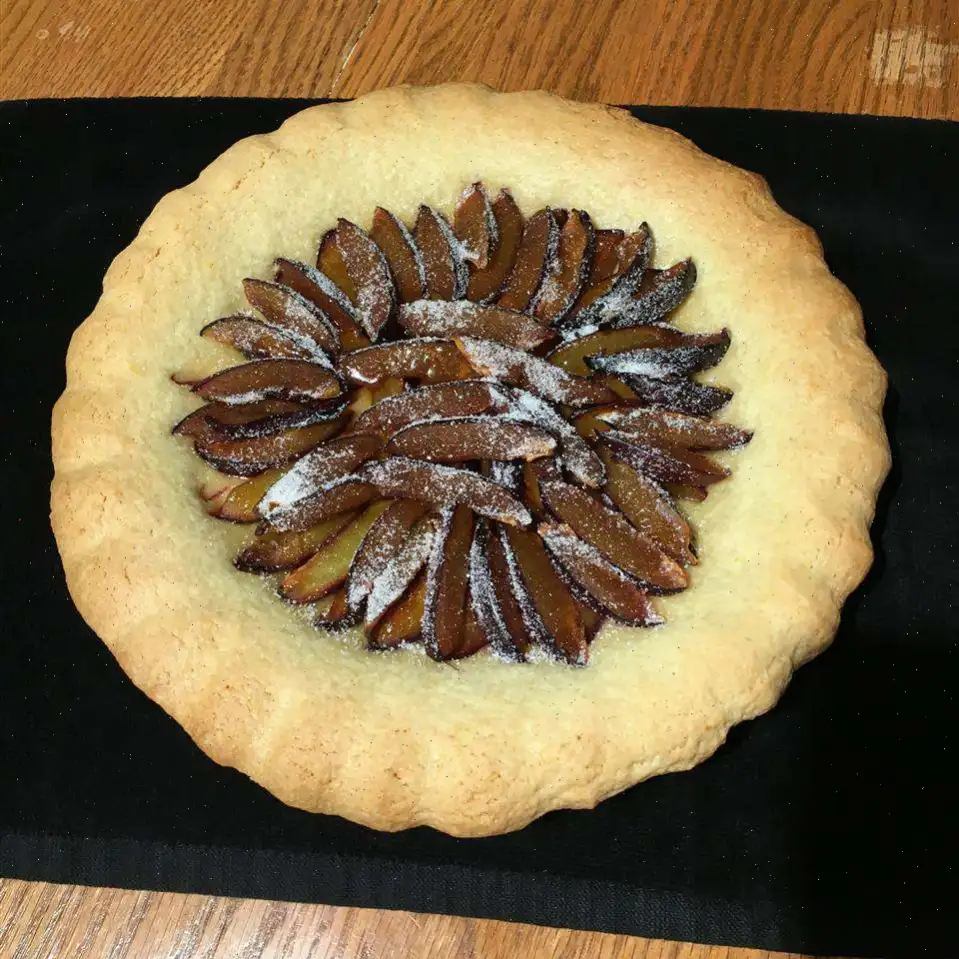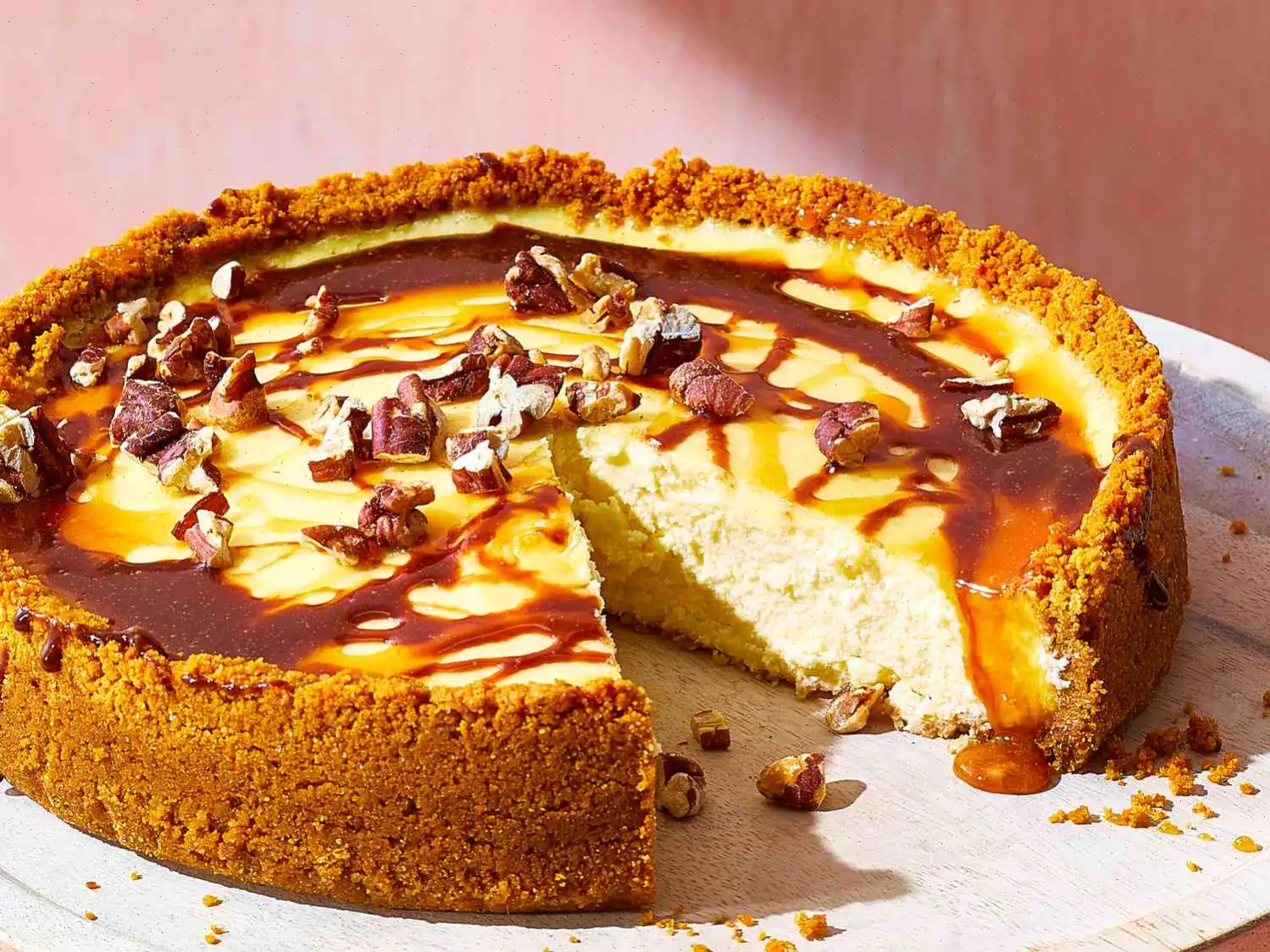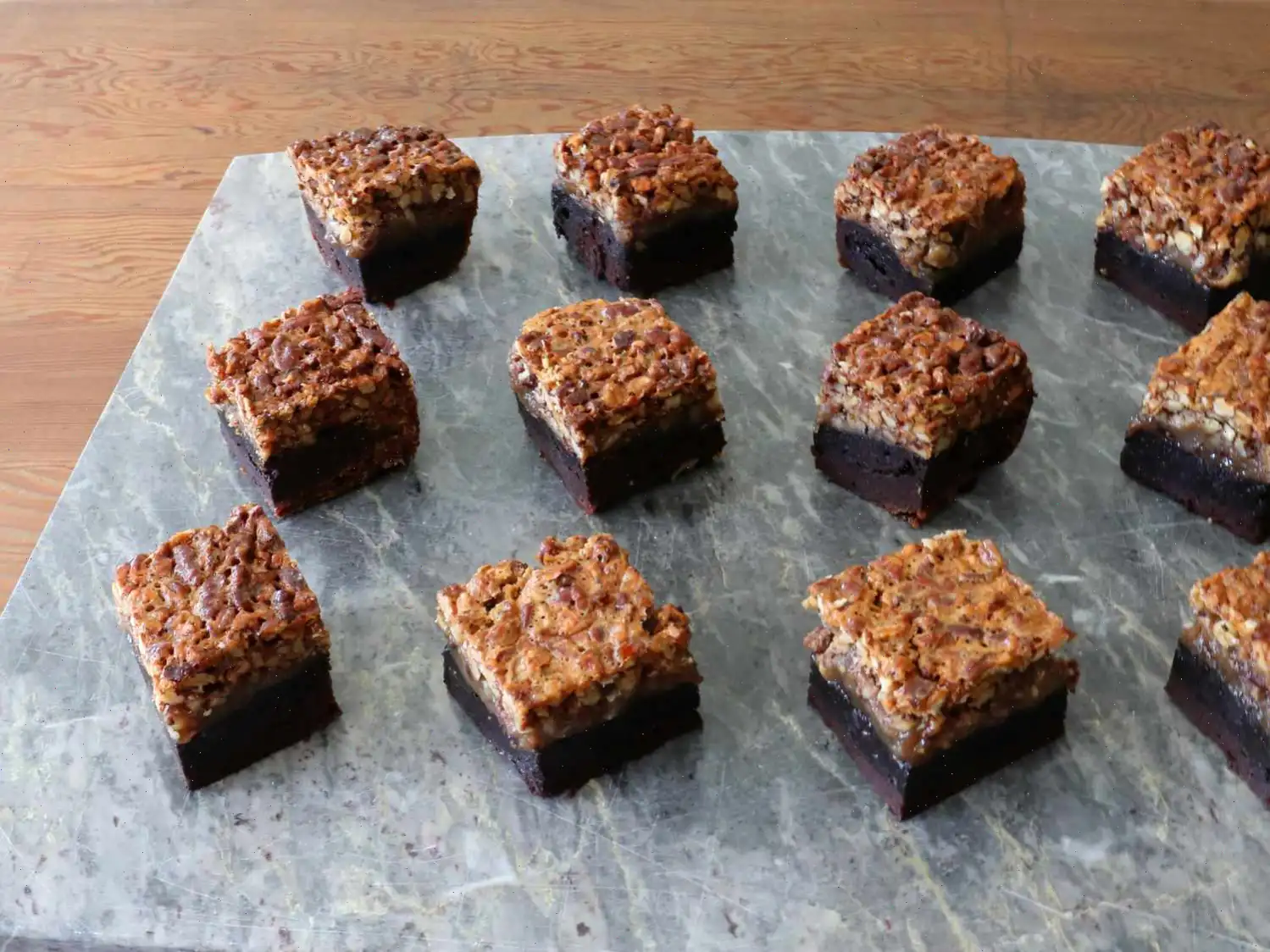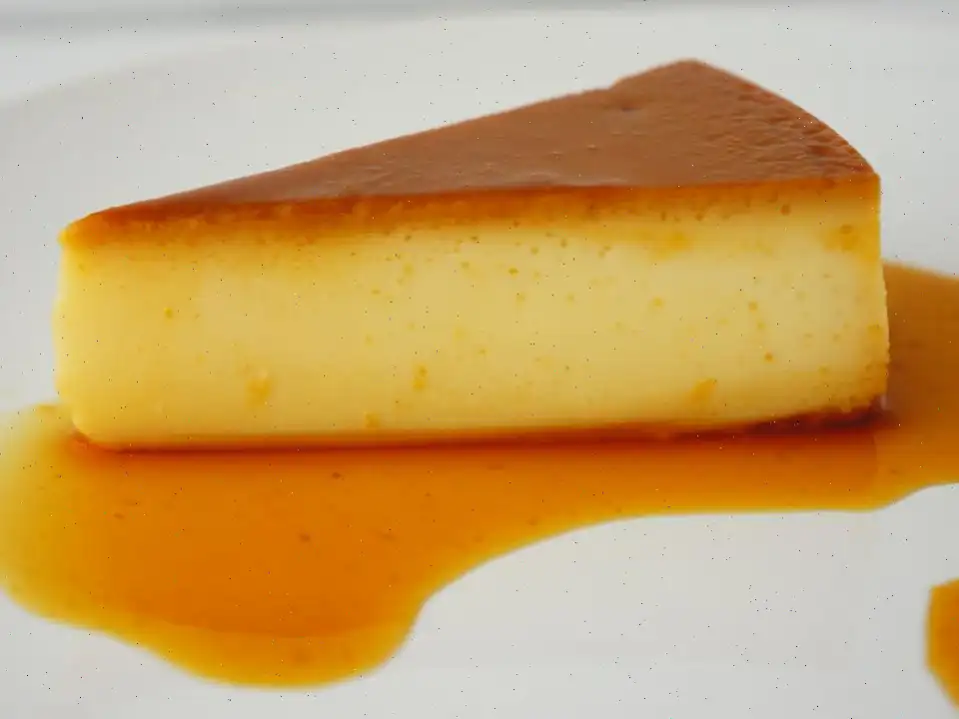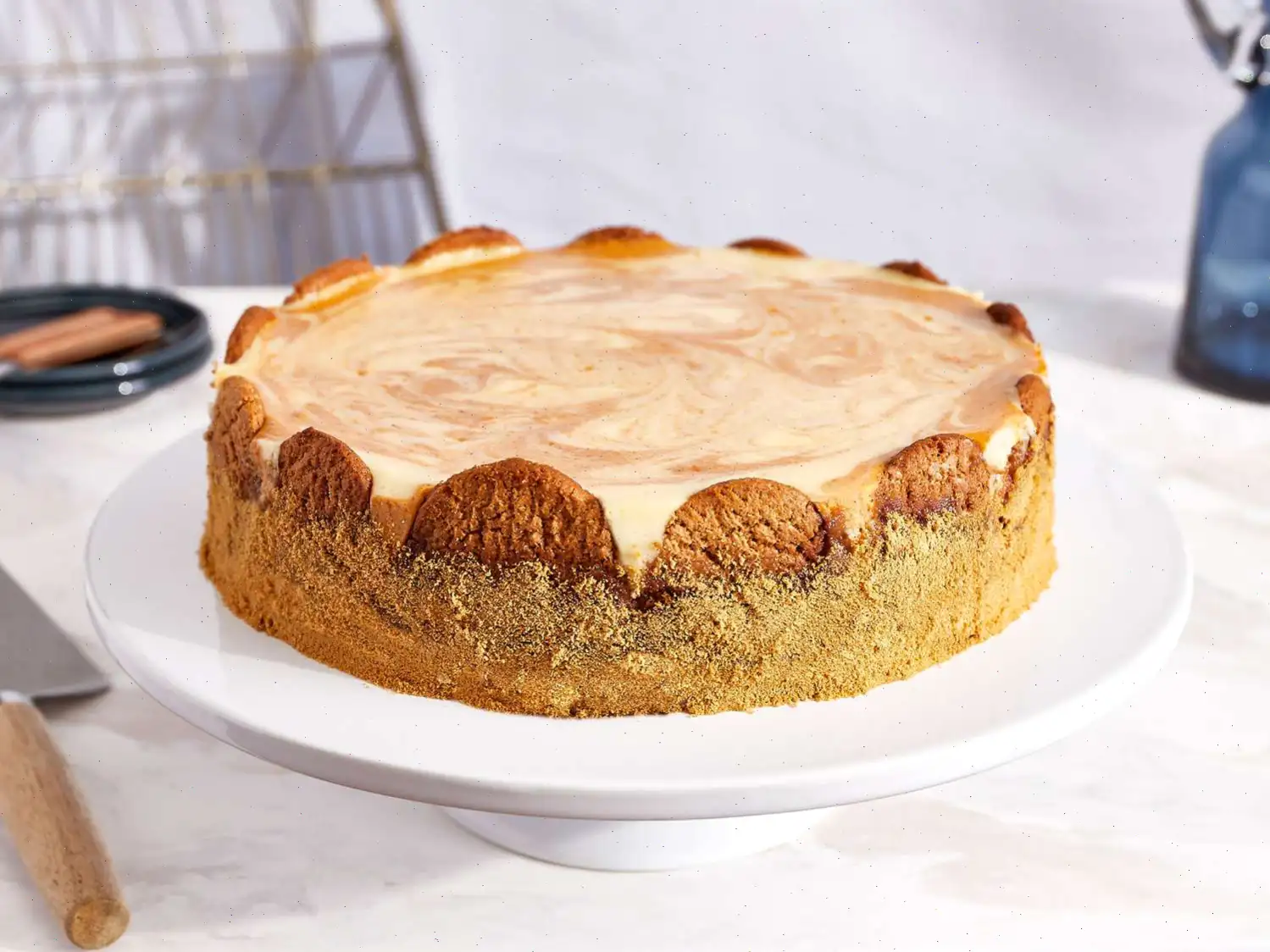
Zwetschekuchen (German Plum Tart) Recipe
Ingredients
- 4 cups all-purpose flour
- 1 cups white sugar
- 1 teaspoon grated fresh lemon zest
- 1 pinch ground cinnamon
- 1 cup butter, cut into chunks
- 2 large eggs
- 2 large egg yolks
- 1 teaspoon water (if needed)
- 3 pounds Italian prune plums
- 1 tablespoon white sugar (or to taste)
Directions
- Place the flour, 1 cups sugar, lemon zest, and cinnamon in the bowl of a food processor. Add the butter and pulse until the mixture turns grainy.
- Add the eggs and egg yolks to the processor, pulsing until the mixture gathers into a ball. If the dough doesnt come together, stop the machine, sprinkle several drops of water onto the dough, and pulse again.
- Transfer the dough to a covered and refrigerate for 3 hours, or preferably overnight.
- Preheat the oven to 350F (175C). Let the dough rest at room temperature for about 30 minutes to warm up slightly.
- On a well-floured surface, roll out the dough into a 9 -inch circle. The dough will be rich and sticky. Press the dough circle into a 9-inch pie plate.
- Quarter and slice the plums. Arrange them skin-side down on top of the dough in a neat ring, starting from the outer edge and working inward in a tight row.
- Bake in the preheated oven for about 45 minutes, or until the plums are bubbling hot and the crust has started to brown.
- Allow the tart to cool. Just before serving, sprinkle with 1 tablespoon of sugar for a touch of sweetness.
Nutrition Facts (per serving)
| Calories | 451 |
|---|---|
| Total Fat | 18g (23%) |
| Saturated Fat | 10g (52%) |
| Cholesterol | 106mg (35%) |
| Sodium | 123mg (5%) |
| Total Carbohydrate | 68g (25%) |
| Dietary Fiber | 3g (10%) |
| Total Sugars | 35g |
| Protein | 7g (14%) |
| Vitamin C | 11mg (12%) |
| Calcium | 27mg (2%) |
| Iron | 2mg (13%) |
| Potassium | 243mg (5%) |
* Percent Daily Values are based on a 2,000 calorie diet. Your daily values may be higher or lower depending on your calorie needs.

History of Zwetschekuchen
Zwetschekuchen, or German Plum Tart, is a traditional dessert that has been enjoyed across Germany for centuries. The tart is made primarily with plums, which are a staple of late summer and early autumn harvests in many regions of Europe. The tarts origins are tied to German baking traditions, where it is a beloved feature at regional festivals, family gatherings, and holiday celebrations. The use of Italian prune plums is particularly common in this dish, as these plums have a deep, sweet flavor that complements the rich buttery dough. While the tart is most commonly enjoyed in Germany, it has spread to other parts of Europe and beyond, where it is a popular autumn dessert.
Regional Characteristics
Zwetschekuchen is primarily found in southern Germany, particularly in the Swabian region, where the name Zwetschgenkuchen (meaning plum cake) is widely used. However, each region has its own version of the dish. In some areas, the tart is topped with streusel (crumb topping), which adds a delightful crunch and sweetness. In other variations, the plums might be arranged differently or even mixed with other fruits, depending on local preferences. In Franconia, for instance, Zwetschekuchen may be served as a type of open-faced pie, while in Bavaria, it is sometimes prepared with a thicker crust or a hint of spice, such as cinnamon or cardamom.
How It Differs from Similar Dishes
While Zwetschekuchen is often compared to other fruit tarts, such as the French Tarte Tatin or the Italian crostata, it has a unique texture and flavor. The dough used in Zwetschekuchen is rich, buttery, and slightly crumbly, giving it a more shortbread-like texture compared to the flakier, puffier dough of other tarts. Additionally, the plums are often baked on top of the dough in neat rows, which results in a caramelized, juicy topping that contrasts with the crisp base. Unlike many other fruit tarts, which rely on a custard filling, Zwetschekuchen focuses purely on the plums, allowing their natural sweetness and tartness to shine.
Where It Is Typically Served
Zwetschekuchen is a popular dessert in Germany, especially during the late summer and early autumn months when plums are in season. It is often served at family gatherings, village festivals, and during the harvest season. In southern Germany, it is a common dessert for Sunday afternoon coffee (Kaffee und Kuchen), a tradition where families gather to enjoy a selection of cakes and pastries with coffee. Additionally, it is sometimes found at Weihnachtsmrkte (Christmas markets) during the holiday season, where it is served as a warm, comforting treat. The tart is also popular in home kitchens, where its baked as a comforting, seasonal dessert for friends and family.
Interesting Facts
- The word Zwetsche refers to the Italian prune plum, which is the key ingredient in the tart. These plums are known for their deep purple skin and sweet, dense flesh.
- In some areas of Germany, its customary to add a sugar crumb topping (Streusel) to the Zwetschekuchen, which gives it an extra layer of sweetness and texture.
- The tradition of baking plum cakes dates back to medieval times, when plums were one of the most widely grown fruits in Europe. Many European countries have their own variations of plum cakes, but the German version is particularly beloved.
- Although Zwetschekuchen is often baked in a tart form, it can also be made in a rectangular shape and served in slices, similar to a sheet cake.
- In the Swabian region, Zwetschekuchen is a particularly popular treat during the annual "Zwetschgenfest" (Plum Festival), where plums take center stage in both food and drink, including plum wine and schnapps.
FAQ about Zwetschekuchen (German Plum Tart) Recipe
Comments
Susan Gomez
06/17/2023 10:55:33 AM
Absolutely divine! I had so much pastry and plums that I was able to make two pies - one in a larger tin as shown, and another with a lattice top in a 9" pie dish. The pastry was fantastic - I was concerned about the bottom being soggy, but it turned out perfectly! I froze the lattice top pie and reheated it before serving, and it still tasted just as amazing as the fresh one. Highly recommended!
Tyler Jones
10/09/2024 10:55:33 PM
Unable to locate plums, so I substituted mixed berries instead.
Patrick Jones
11/10/2022 09:33:16 AM
I really enjoyed this recipe, it was simply awesome and I absolutely loved it. However, I have a question about adjusting the rising of the dough. My mom's version wasn't as fluffy, and I'm interested in making it less rising. Any tips on what to exclude or increase in the recipe to achieve that effect? Thanks in advance for any guidance.
Angela Thomas
03/26/2023 09:26:32 AM
This dessert is amazing! It brings back memories of enjoying similar pastries when I lived in Germany. I can't wait to recreate it myself. It's like indulging in a warm hug of comfort food.


